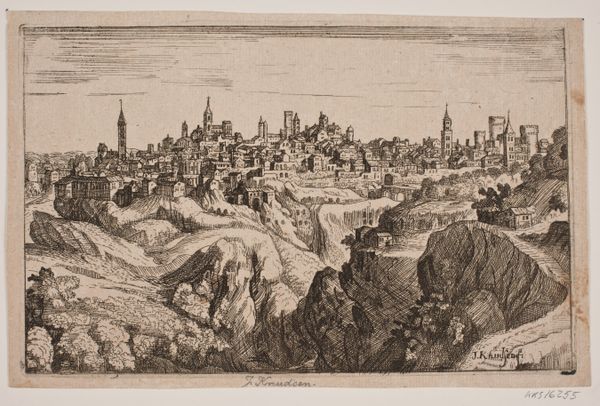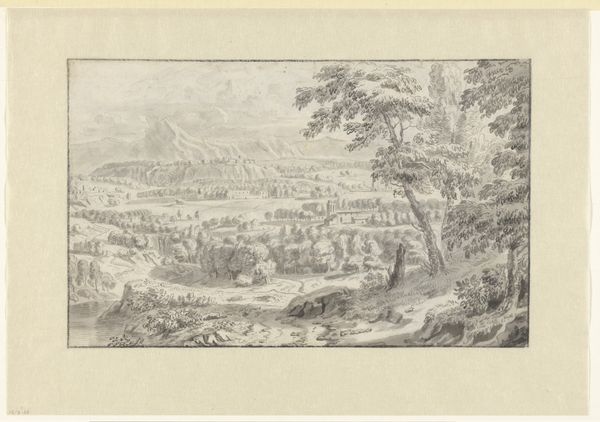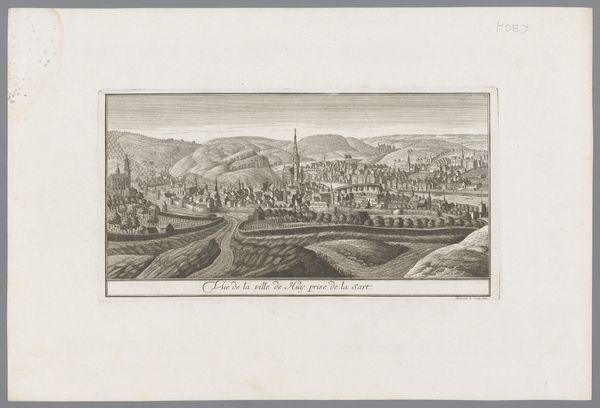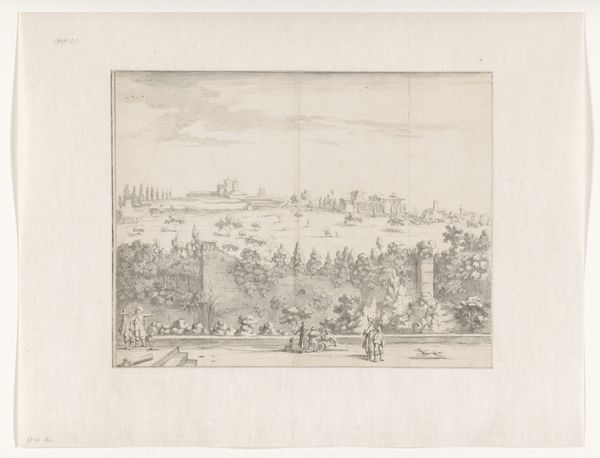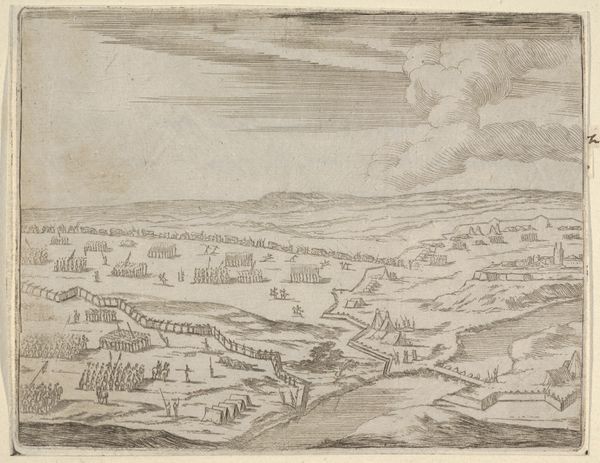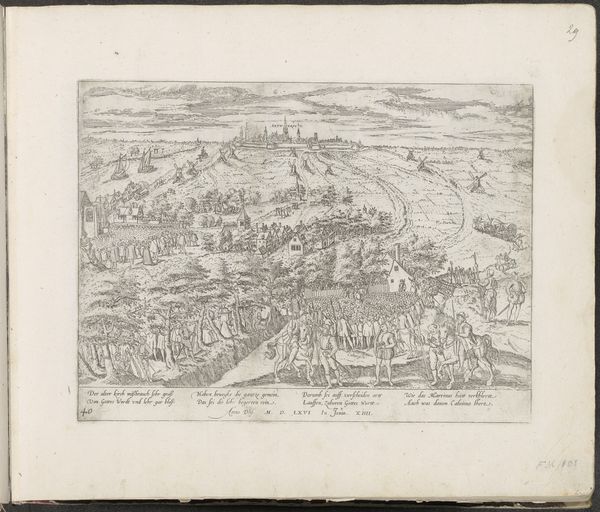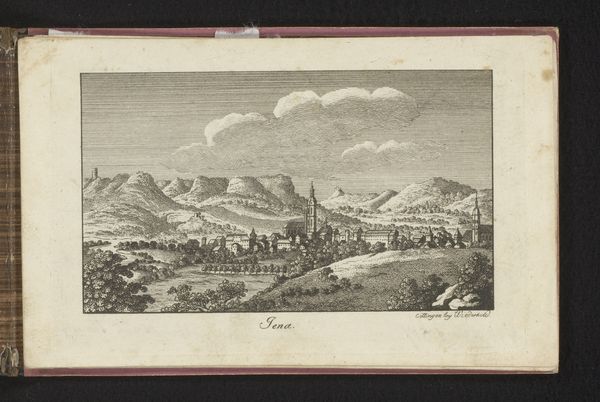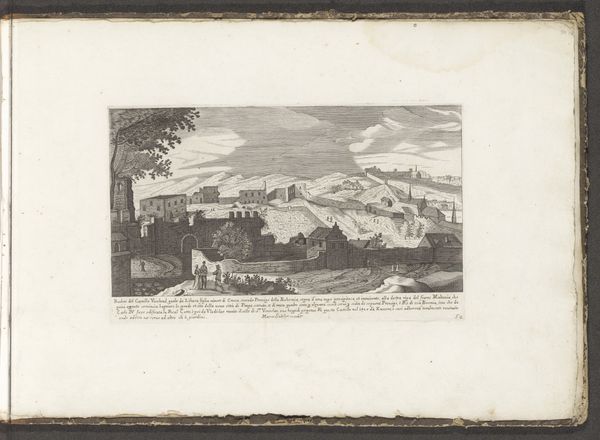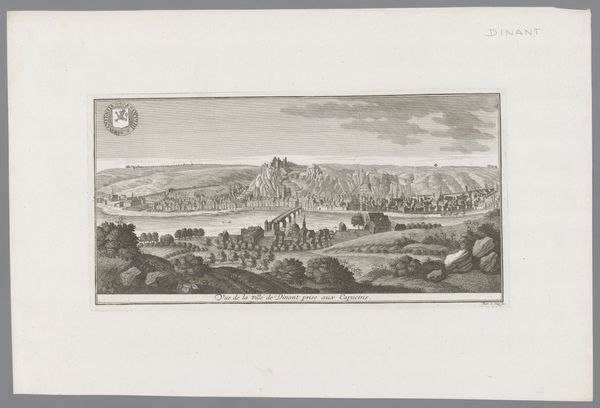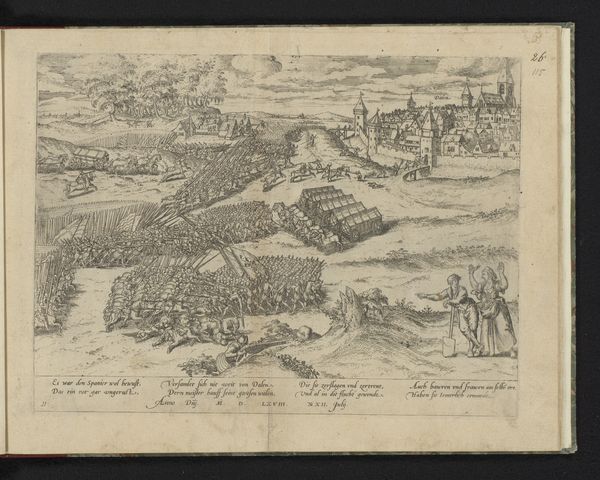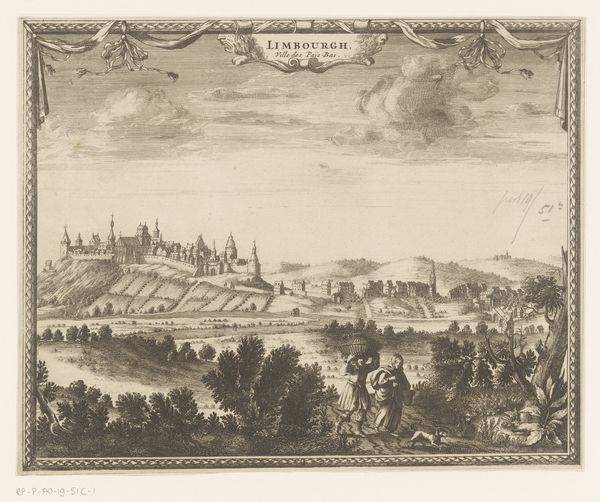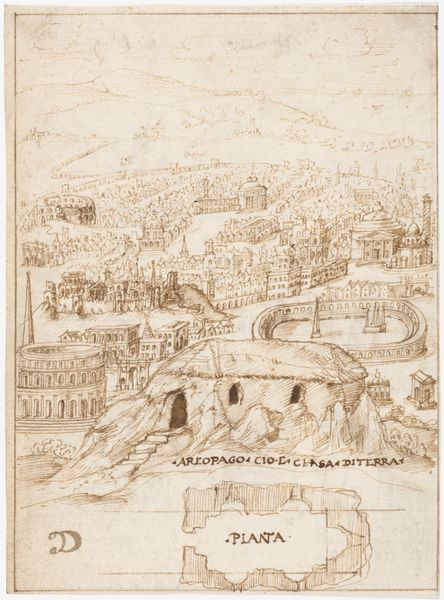
Bird's-Eye View of the City of Casale di Monferrato 1725 - 1745
0:00
0:00
drawing, print, etching
#
drawing
#
baroque
# print
#
etching
#
landscape
#
etching
#
cityscape
Dimensions: Sheet: 6 5/8 × 14 3/4 in. (16.9 × 37.4 cm)
Copyright: Public Domain
Curator: This etching presents a bird's-eye view of the City of Casale di Monferrato, created sometime between 1725 and 1745. It is attributed to Francesco Zucchi. Editor: It's captivating. It appears incredibly ordered and meticulous. What strikes me is how this very calculated composition, dominated by architectural structures, evokes a feeling of control—almost a blueprint of power in the baroque era. Curator: Precisely. The cityscape, meticulously etched, serves as a potent symbol. Notice how the city’s layout and imposing walls reflect the era's obsession with fortification and defense, embodying a sense of vigilance and a carefully constructed sense of protection. These zig-zagging fortress walls say a lot about the anxieties of the time. Editor: Absolutely, the visual language of defense is so prevalent. But let's consider Zucchi's technique, which looks laborious. Every line and meticulous mark contributes to this powerful expression of civic authority and engineering prowess, showing not only Zucchi's skill but the labor needed for defense itself. How does that labor inform the piece's function? Curator: That's an excellent point. Consider the tower—undoubtedly the cathedral or some dominant religious site. Even that choice of perspective creates visual metaphors. What values were prioritized in their cultural memory and perpetuated by representing Casale in this specific fashion? Editor: Right, what kind of experience was the artist trying to craft and how does materiality reflect cultural intention? Etching as a reproducible medium suggests information dissemination was part of that intention too. Curator: Definitely! In this work, Francesco Zucchi preserves the architectural legacy but also embeds a complex web of social and psychological undertones within his meticulously crafted scene. Editor: In the end, thinking about process and material allows me to contemplate who had access to seeing it at the time, and why this landscape mattered as an aesthetic object—and how the landscape represents very real and material things such as war and fortifications.
Comments
No comments
Be the first to comment and join the conversation on the ultimate creative platform.

